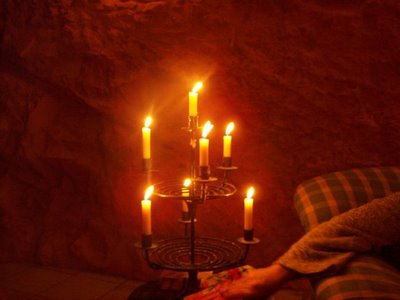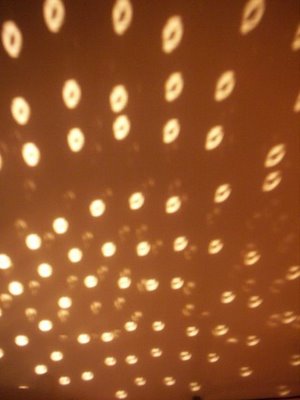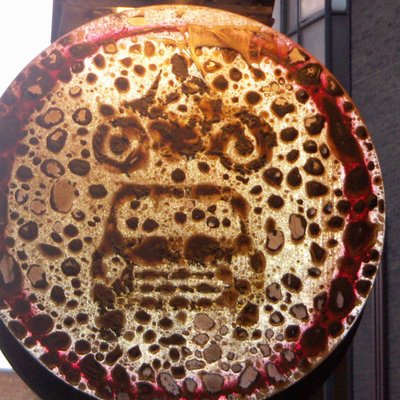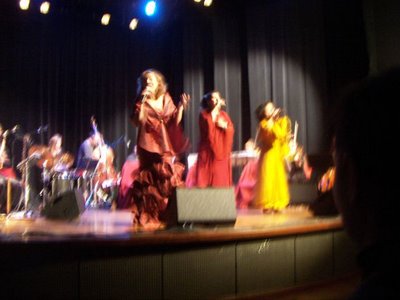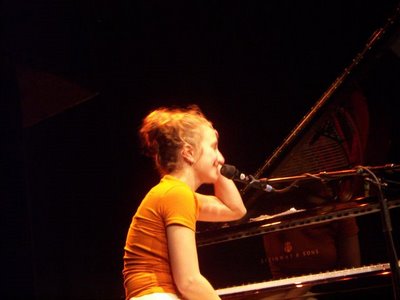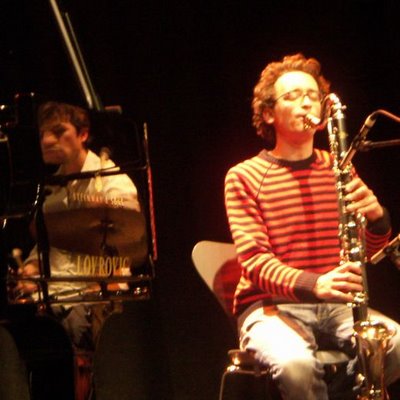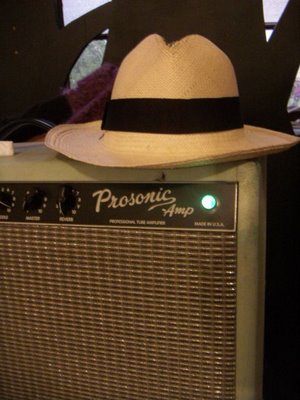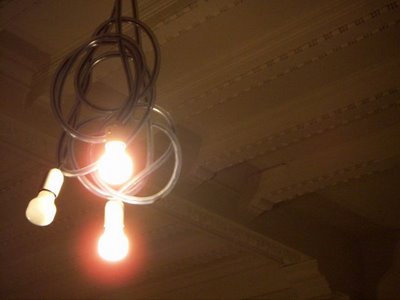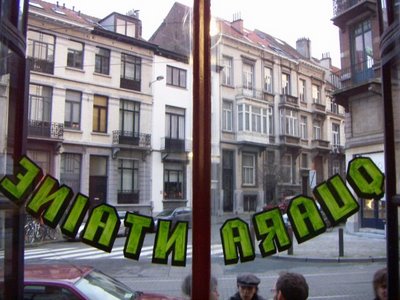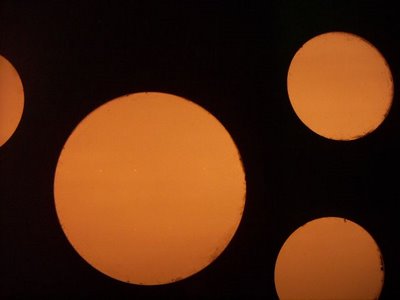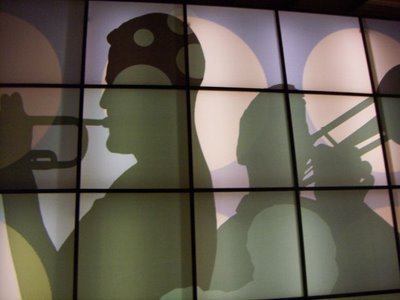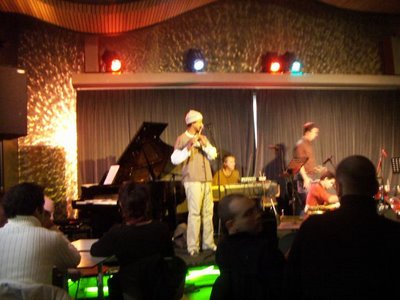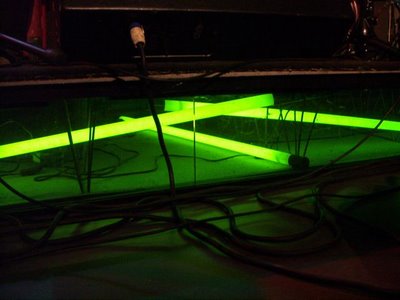
"jazz is like a virus: once you've caught it, you've got it" - Evan Parker
Alexander Von Schlippenbach - p
Evan Parker - ts, ss
Paul Lovens - d
It's the yearly AVS Trio
rendez-vous,
nearly to the day. Unlike last time, Parker played soprano as well as tenor, in the second set. And, frankly, having his patented circular breathing soprano saxophone solo create a weird buzzing sound in your ears is a powerful expereince everyone should have at least once.
They barrelled straight into it, but it's only when Parker dropped out and Lovens stopped swamping everything with his very bright cymbals and started interacting with Von Schlippenbach that I really got into it. AVS provided the most highlights, for me. The clarity and lightness of even his wildest playing and his humourous demeanour - hands flopping about, held high above the keyboard, singing along to himself in a very rhythmical, quasi-scat way - were amazing. As is his wont, free-stride and blues references (did I really hear a hokey ascending dominant 7th chord bass line?) were sprinkled throughout the flurries and percussive outbursts.
Effecting profound changes of mood can be difficult in this kind of free jazz, but AVS managed that when, after an intense circular tenor passage, he lingered over single chords for longer, creating an agitated stillness. Lovens followed that up by examining the resonance of various bells and cymbals. He'd often been rather invasive during the set, so I appreciated the quietness and space.
During the pause, everyone seemed to find the first set lacklustre. Maybe the band did too, as the approach shifted considerably in the second half. AVS placed some stuff on the piano's strings and they started with very quiet, broken, disembodied blurts, the very opposite of the first set's beginning.
Another AVS highlight: he drew us out of the abstract stuff by playing a very fast, pounding and sinister motif in the Bösendorfer's lowest register, after having placed a grater (I believe) on the strings that rendered the sound very metallic. He moved the pattern upwards
very slowly, adding a note at a time. It was the first time of the concert that one element was sustained for so long and it could have been the score to a particularly sinister movie scene.
After the concert, P-M and J-P filmed an interview with AVS and Parker, which Philippe (of
Kris Wanders review fame) led. Among many interesting things, AVS clearly defined himself as a jazz musician, in terms of history and attitude. There was little doubting it, really, as at one point he slid patiently into a very traditional reflective jazz piano ballad mode. The concert ended with the night's most ferocious playing. I should have been hollering along, but I was kind of exhausted, so I didn't appreciate it as much as I should have.
The encore was perhaps just what I needed: AVS hit the strings with this huge mallet and let the sound resonate and decay naturally, altering it only lightly with the sustain pedal. What a beautiful sound that is. I used to work in a sixth floor office which was level with a church's bell. Over time, I came to really enjoy hearing the bell ring, then go up in pitch as the fundamental and lower overtones died away before the higher ones did. It's amazing how much the piano's sound changes as the same process occurs, but in a much more complex way.

